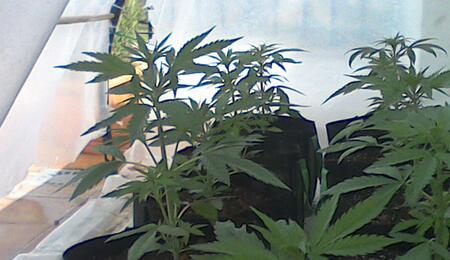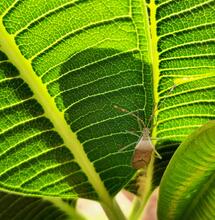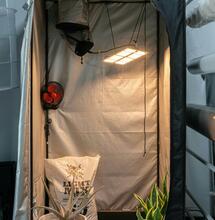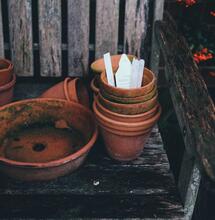Top Tips For Spring Time

It is every Cannabis growers favourite time of year and the stage when preparing in advance pays well. For many who are unable to have an indoor garden, a seasonal grow producing large sized plants is the only way to grow and one that is inexpensive and require low maintenance. Below are my top tips to consider when preparing for Spring time and how to grow the best possible plants outdoors.
Find The Best Location
This does not necessarily mean the most obvious place as growing Cannabis outdoors can have its advantage and disadvantages, depending on where you live. On the basis that you are growing in the comfort of your own back garden, you will need to think about how the plants will grow in size, create an aroma, will attract unwanted pests and insects and overall stealth. Another important factor is the amount of sunlight the garden receives and how the position of the sun will move over the Spring and Summer months. For those growers who are subject to a limited amount of sun earlier in the year, then moving the plants around to follow the sunlight will be advantageous.
Think About The Strain
No matter what strain you select based on strength, yield, effect, terpene profile and so on, you will only ever grow what the plant is capable of, given the circumstances. For example if you live in the U.K and have a good amount of sunshine, however towards the end of the year the days get shorter quickly, then selecting a long flowering sativa or Haze variety would be pointless. A great tip here for growers who face challenging summers such as Northern Europe, is to run with sturdy indica dominant strains, that are genetically designed to handle cold nights and flower in 7-8 weeks. Strains with an Afghani influence will have a higher resistance to mould and cold making these varieties of Cannabis a great choice for growers with limited sun.
The Growing Medium
The growing medium plays a big role in the outcome of the plants growth rate, health and overall vigour. If you are growing indoors or outdoors, having a well balanced growing medium is essential to a well drained substrate. What is most important for the root zone especially in the early growing stages is air capacity and the number of air pockets within the growing medium. Roots will always travel to where there is air and once watered will absorb nutrients through a fine layer of film that is provided by the growing medium. My top tip here is to use plenty of perlite to ensure there are plenty of air pockets and the weight of the growing medium is relatively light increasing drying out times and the plants ability to wick. The main reason why peoples plants become over watered is because their growing medium has a good retention of water but not a good aeration process. Once you have a well balanced organic medium that is 50% perlite, you should not have to worry about the root zone becoming over saturated and it will also increase the number of times you can feed your plants, incomparrison to a medium that was primarily peat moss or soil.
Pot Size
There is a general understanding that the bigger the pot then the bigger the plant will grow. Now this is true but to some degree, as research has shown that no matter what species of Cannabis strain, the root zone depth will be close to 14 inches. The actual width of the root zone is a different story and the capacity of your growing pot can dictate the final width and stature of the plants. A good tip here is to decide if you can afford to repot your plant into one final location where it will sit for the remainder of the seasons, or if you have to move the plants around to follow the sun throughout the day time. Either way is make sure that you re-pot the plants once they are beginning to become root bound to avoid unwanted stretching during the growing phase.
Security and Stealth
Despite the majority of Cannabis growers being karma conscious friendly people, there is still a criminal element involved and as we walk a fine line between legality and thieves, having a secure location should be the number one priority. There are a few things that you should be wary of and they are the authorities. The police can easily spot your outdoor crop from a helicopter if you have little cover or camouflage, or a nosey neighbour may either see the plant, or even worse smell. The other threat to be concerned about are thieves who will appear in the night and swipe your lovely ladies out of your garden whilst you are fast asleep. Either of these threats are as a bad as each other, so my top tip here is to think about when the plants are actually in full flower and beginning to really smell, who will be able to smell them, who can see them and how easy can my garden be accessed by a passing stranger. Of course there is only so much you can do but as the expression goes...failing to prepare is preparing to fail.
Fabric Pots and Air Pots
If you are a big organic grower, then establishing a prolific root zone should your main focus so using either fabric pots or air pots, is one great way to really increase root mass. Plastic pots will encourage root bound plants which only restricts the plants ability to uptake nutrients as well as can stunt the growth. What is really great about the way felt pots and air pots work is by forcing a root hair to come into contact with the air, causing it to prune and as a result produce new root tips. It is on the tips of the root hairs that tiny beneficial microorganisms will attach themselves to the root zone and access the deepest pockets of the growing medium and substrate returning food back to the plants in a symbiotic relationship. A top tip here is to make your own felt pots at home and to make a homemade air pot simply take a connected tray of small starter pots and curve them around each other until they connect in a circle. Add a saucer to the base and you now a simple air pruned pot. Good luck getting started this Spring… Peace Out Author: Stoney Tark



.png)